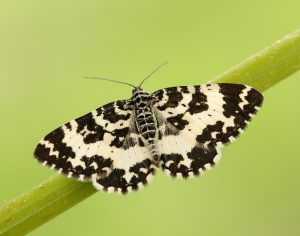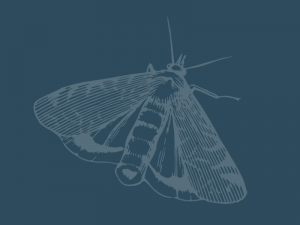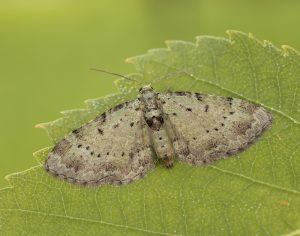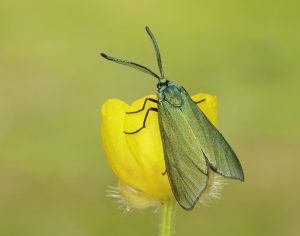With around 1200 species recorded in Dumfries and Galloway, moths constitute a significant proportion of our biodiversity. They are widespread throughout our region, found in all terrestrial and some freshwater habitats, and in some locations they can be extremely abundant. Their diversity, distribution and abundance makes them an essential component in the functioning of ecosystems. But moth populations are in decline, and in the face of mounting human pressures, moths need our help if they are to thrive in the future.
Why conserve moths?
Moths are part of an intricate web of life. Their simple abundance represents a significant food resource for a wide range of other animals. As larvae, they are the main food for many nestling birds, and adult moths are eaten by some adult birds, particularly nocturnal species such as Nightjars. Unsurprisingly, they are also a significant food source of many species of bat. Rather less obviously, moths are a source of food for numerous parasitic wasps, and even some fungi such as the Scarlet Caterpillar Club.
Moth larvae are significant herbivores, capable even of defoliating large trees, but adult moths contribute more positively to plant development, increasingly being recognised as important pollinators, in some circumstances being more efficient than bees.
However, there is compelling scientific evidence of widespread declines among our moths. This has resulted in the population of some rare species becoming threatened with extinction, but just as importantly, population levels of hundreds of common moths species have decreased since the 1960s, many very dramatically.
Which species are important?
All species of moth are important. A handful of species that have taken advantage of human-induced habitat changes to become pests, but even some of these may still perform valuable ecological functions. It is possible to broadly group moths into ‘generalists’ and ‘specialists’, and it is the latter that are most at risk.
Generalist species feed on a variety of common plants in a range of habitats, and are often strong fliers, capable of rapid dispersal. Due to its southerly location, Dumfries and Galloway regularly welcomes new species to Scotland, but most of these are generalists, well adapted to climate and/or habitat changes. Their arrival may excite the moth recorder, but history demonstrates that most of them go on to be common and widespread species that continue to expand into other parts of Scotland. For example, species such as the Buff Footman, first recorded in Dumfries and Galloway in 2006.
Moths that are specialist feeders on a limited range of plants, many of which are restricted to particular habitats, are threatened by changes to land management or the climate. Furthermore, many of these moths have poor powers of dispersal, so cannot easily move, even if the habitat and climate becomes suitable for them elsewhere. It is these long-term but declining resident species that are of increasing conservation importance.
What has been done for moth conservation?
A few species are threatened at national level and specific and targeted action has been formulated for them in order to halt their decline, or in extreme cases, to save them from the same fate as the 62 species of British moth species that became extinct in the 20th century. Just a handful of British species (none in Dumfries and Galloway) are protected by the law, but 81 other species were identified in the UK Biodiversity Action Plan (1992) as in need of UK-wide action. Nearly all of these remain of national concern today. Very few of them are found in Dumfries and Galloway, but species such as the Argent and Sable, Sword Grass and Portland Moth fall into this category.
Additional moth species considered to be of regional importance were identified in the Dumfries and Galloway Local Biodiversity Action Plan (2009). These include species such as Broad-bordered White Underwing, which is at the southern edge of its British range but is rarely recorded here due to its habitat (mountain tops) being of restricted local extent.
A number of actions, such as positive habitat management or protection from development, have been carried out as a result of listing in national and local biodiversity action plans.
Priority Species in the Dumfries & Galloway Local Biodiversity Action Plan
What more needs to be done?
Increasing awareness of moths and their importance will benefit moth conservation, leading to direct management, research, more informed advice and better policy development. But a first step in all of these actions is nearly always recording and monitoring of moths. Keep sending in the records!











